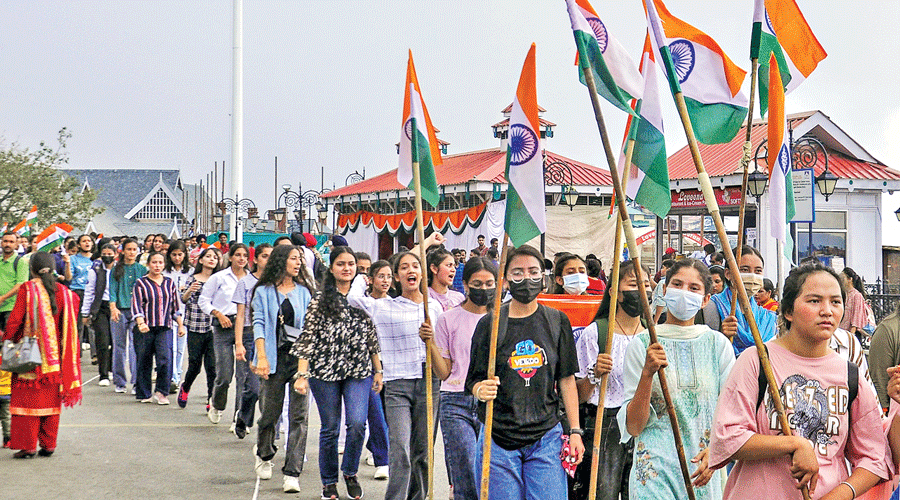During a bitterly cold winter night in Oxford a little over a decade back, I was terribly homesick. I found my refuge in nostalgic YouTube videos, as homesick people often tend to do. Youtube, which always seems to have an uncanny ability of sensing one’s mood, suggested a rendition of the national anthem set in the Siachen glacier.
A scene from that video stayed with me — of a faceless soldier resolutely clutching the Indian Tricolour strung on a pole during a raging blizzard, using all his strength to prevent it from being blown away. His struggle in keeping the flag upright captured the collective struggle of our forefathers to make India free and the determination with which such freedom had to be preserved. That scene never failed to bring a tear to my eye. Depending on how homesick I felt, it was a lot more than a single drop.
I returned to India and soon after, the Supreme Court of India passed an order that the national anthem would be mandatorily played at all cinema halls before films. The next time I went to a hall, it was to watch the Academy award-winning Moonlight. The Indian flag duly flashed on the screen and the anthem rang out.
This was a cruel irony. The flag and the anthem were manifestations of our freedom — that we could fly it whenever we wanted, sing it whenever we pleased. For the coming-of-age story of a black kid growing up in drugs-infested Miami to be preceded by a rendition of the Indian national anthem was bizarre.
Neither did I want to sing it at the time nor did the flying of the flag on screen give rise to any deep feelings whatsoever. I stood up out of habit, as I suspect was the case with many others in the hall. The logic of freedom had been turned on its head — we were free citizens in a free country but our Supreme Court was forcing us to wear our patriotism on our sleeve.
For me, this incident made the flag and the anthem objects of intellectual inquiry. I learnt about the flag creating feelings of “entitavity” or the perception of a social unit as a cohesive group. Studies had shown that repeated exposure to flags had made groups more unified and threatening, rather than inclusive and cooperative.
The United States was a prime example of such flag nationalism — there were flags in funeral homes, atop bar counters in speakeasies, on number plates of cars, besides flying high in public squares, government buildings and stadiums.
As a visitor, I had mixed feelings witnessing this collective celebration of the flag. At one level, the car owner who had chosen to put a flag on her number plate obviously wanted to demonstrate her love for her country. But at another level, the mass display of such individual acts of patriotism had become threateningly cultish, especially to an outsider. The flag had become an exhibit.
Every year on Independence Day, my mother puts up a flag in our family home. I have very happy memories of that particular flag — it was bought in Durban in 2001 before India played South Africa in a cricket match. The joy and pride of flying the Indian Tricolour amidst a groundswell of South African support remains unmatched.
That is what I feel when I see the Tricolour in our living room every Independence Day — joy, that I am free to fly the flag when I want to, comfort, that in adversity the flag is a fount of strength, pride, in the country I call home, and above all a deep desire to do better for it.
Tagore, writing during the second session of the Indian National Congress in 1886, describes my feeling on seeing the flag better than I ever could: “Ke jagibe aaj, ke koribe kaaj, ke ghuchate chahe jononir-o laaj (who will rise, who will work, who wants to end their motherland’s plight?)”.
⚫ Arghya Sengupta is research director, Vidhi Centre for Legal Policy. Views are personal











